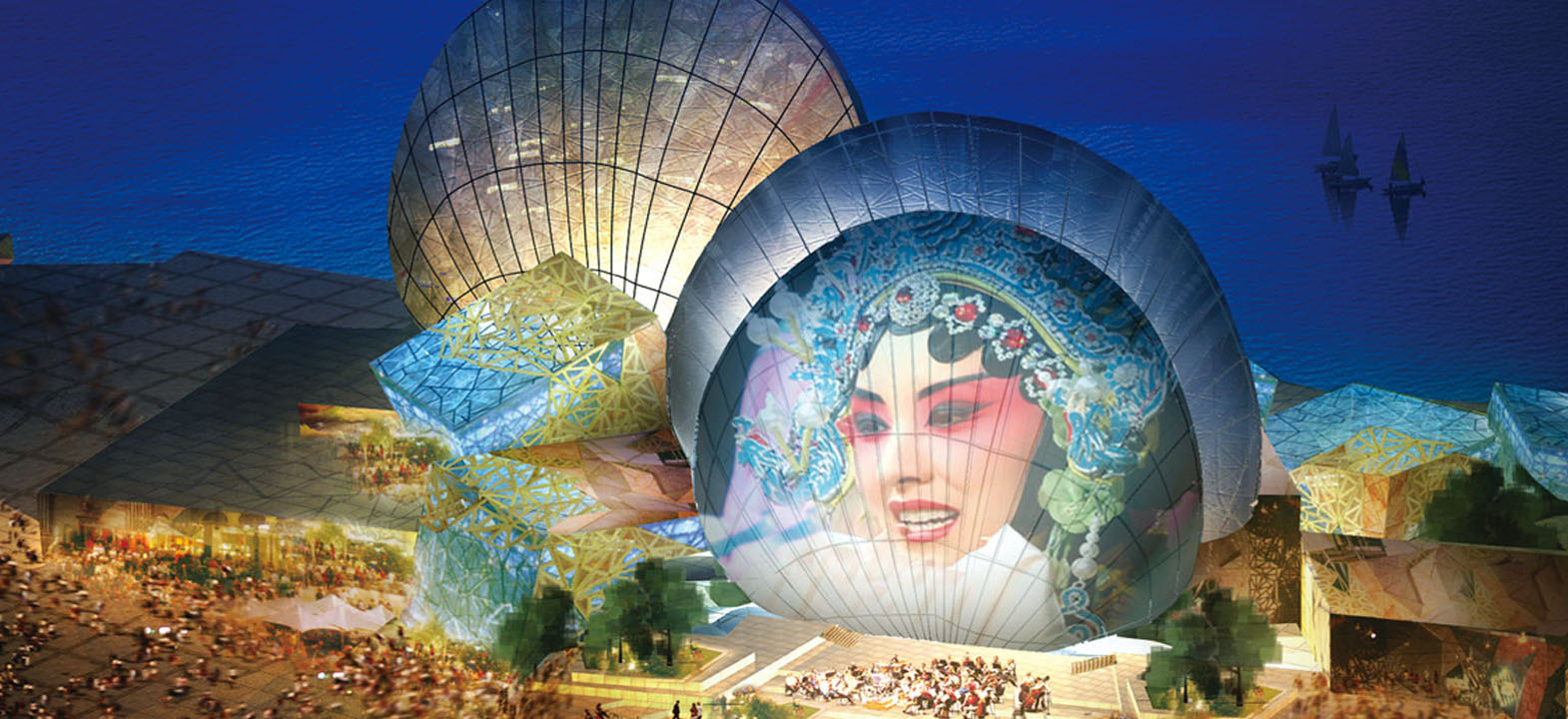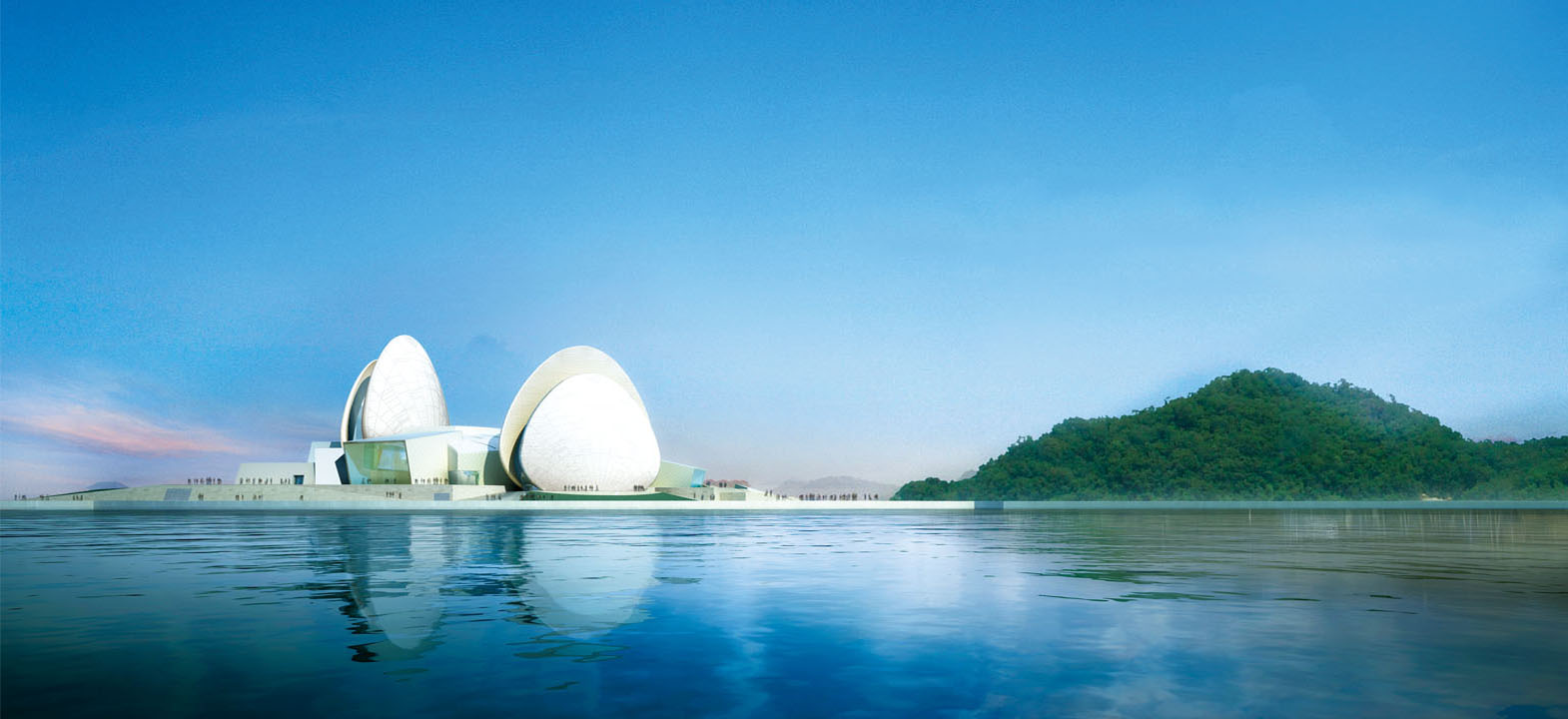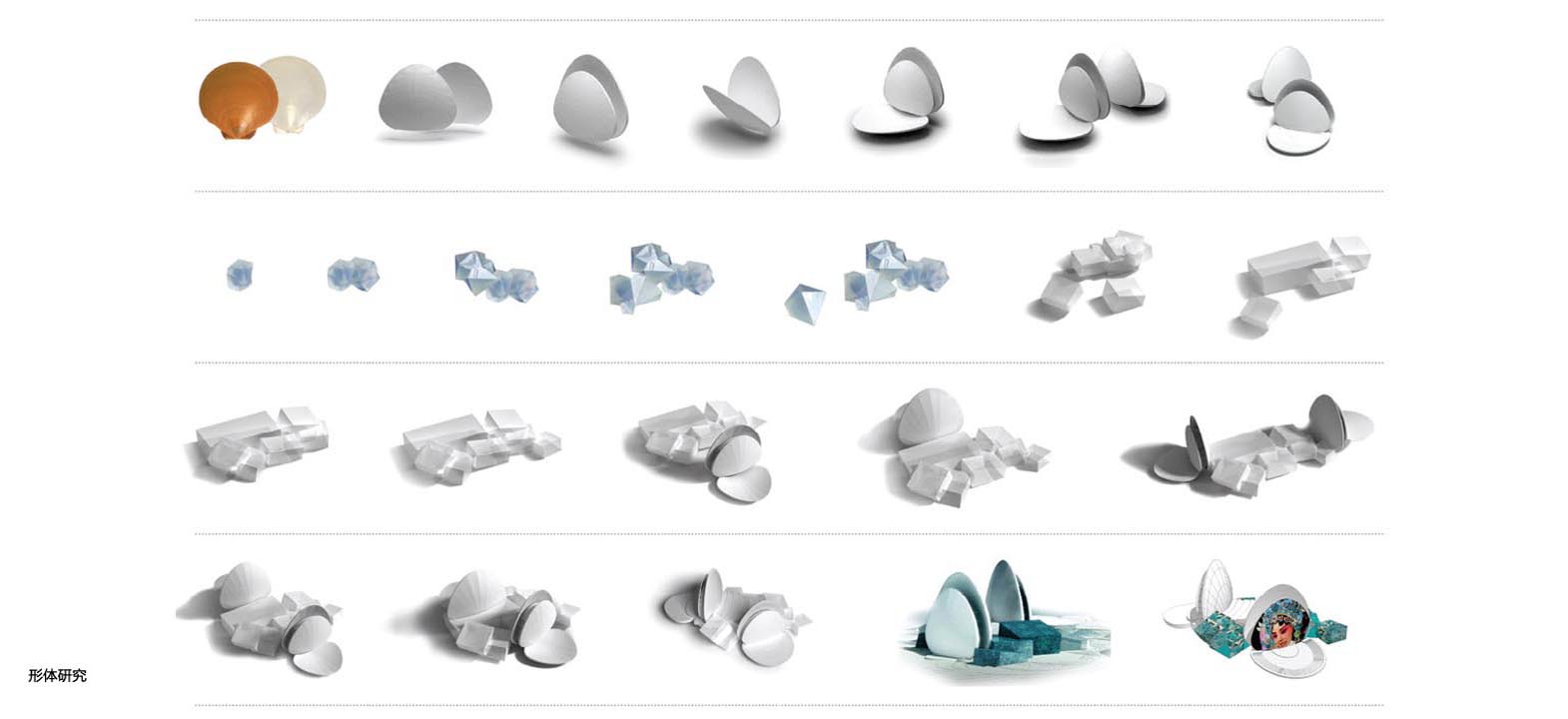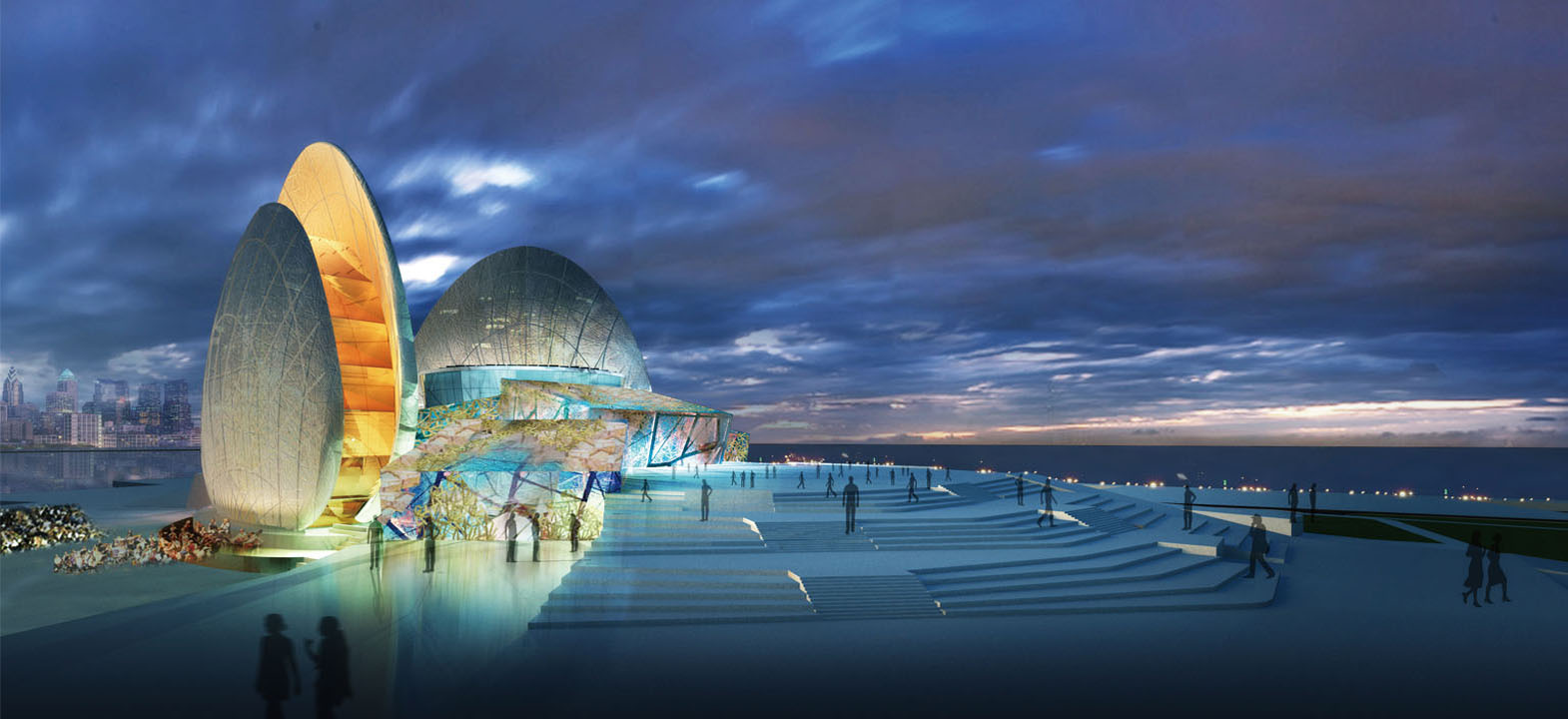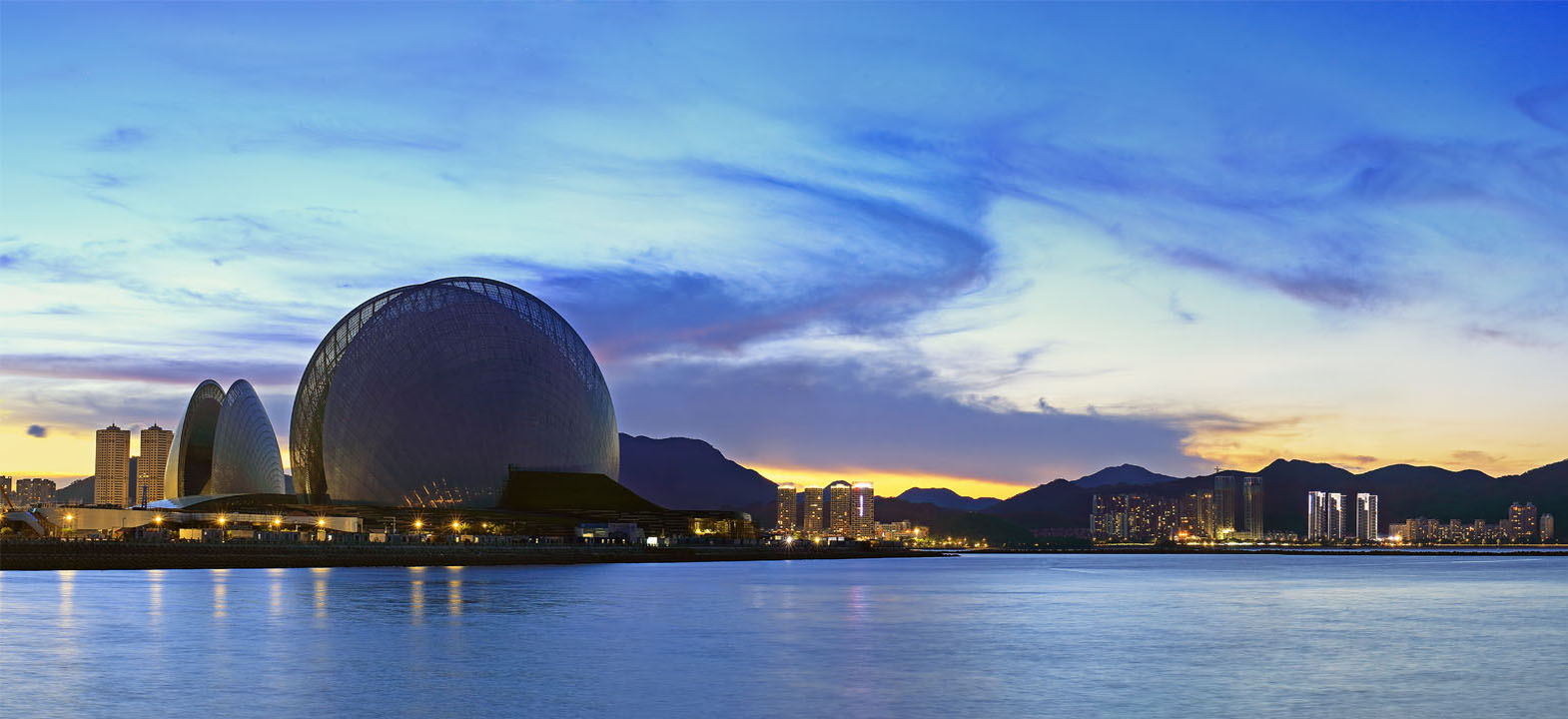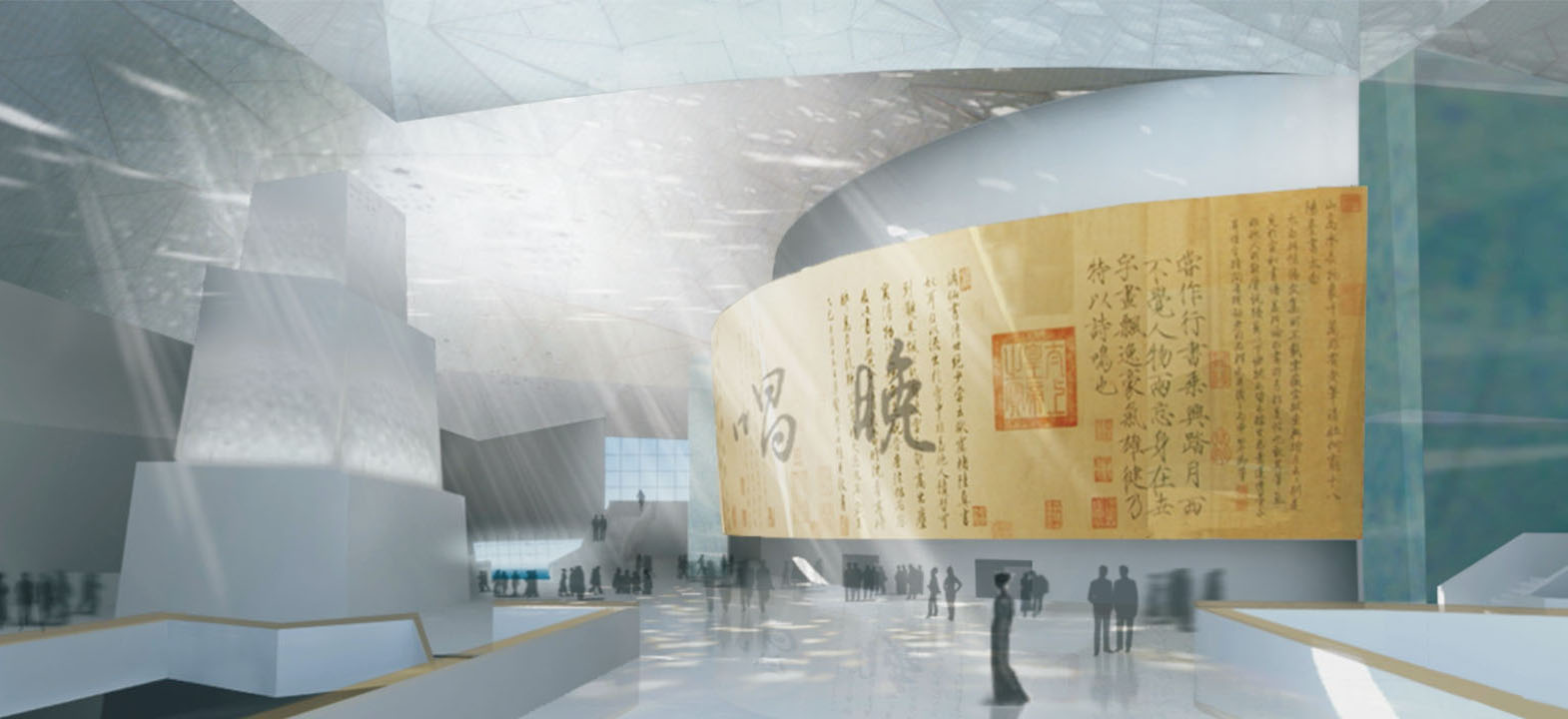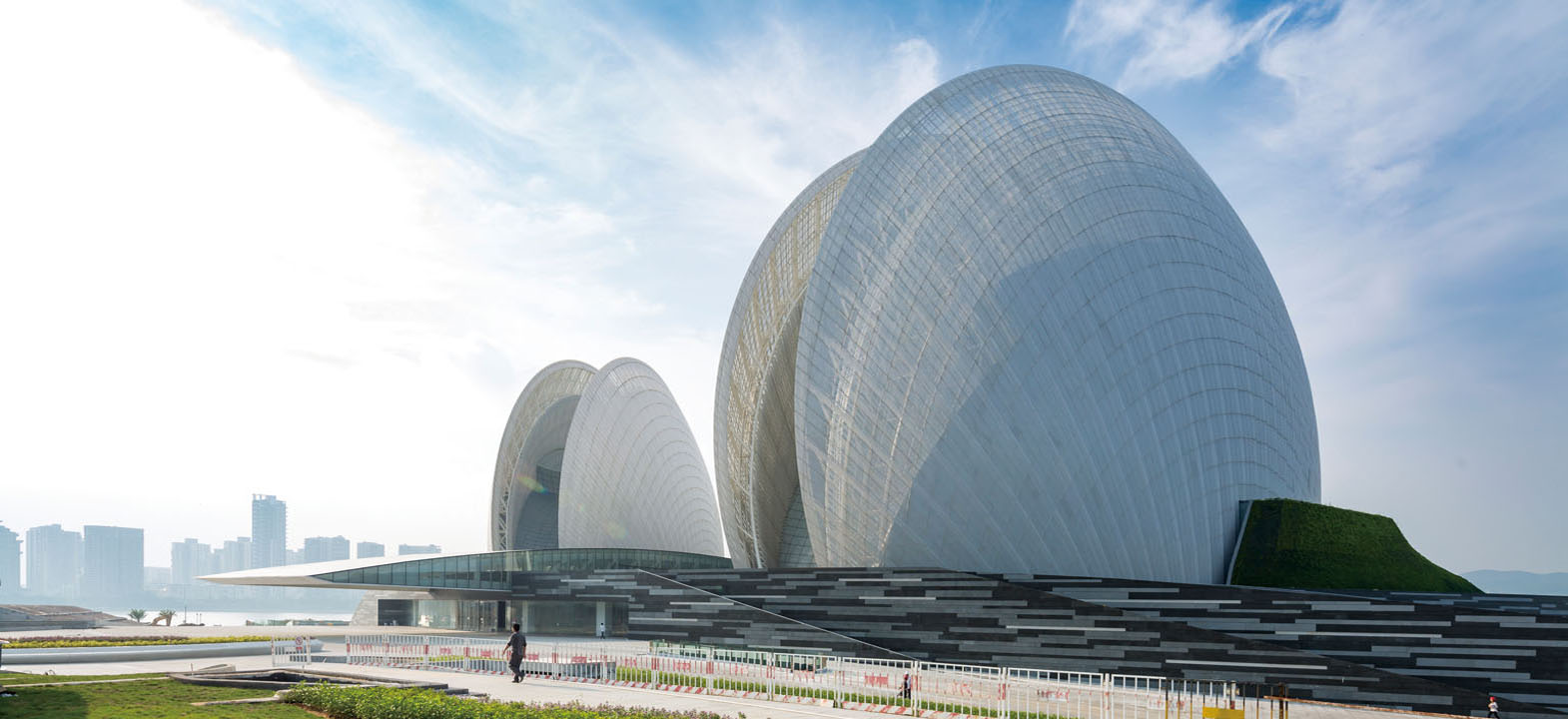Zhuhai Opera House
In August 2008, Zhuhai municipal government solicited the architectural design scheme of Zhuhai Grand Theatre from the whole world. As soon as the bidding announcement was published, 33 famous designers and institutions from the United States, Britain, Germany, France, Switzerland, and other countries participated in the bidding. Finally, after expert review, scheme publicity and public consultation, the “Moon Scallop” scheme, which was designed by Prof. Chen Keshi, won the first prize of this international competition and was determined as the implementation scheme with “design beyond imagination, perfectly expressing cultural style and romantic feelings of this coastal city”. The letter of acceptance describes the scheme fully represents “regionality, originality, and artistry”.
The Zhuhai grand theatre winning bid in the international competition - “Moon Scallop”, after 8 years of design and construction, was put into use in early 2017. The project is located in Yeli Island, an artificial reclamation area of Zhuhai City, covering an area of 420,000 m2, surrounded by the sea and faces Lantau Island in Hong Kong on the East, with excellent landscape conditions. The Zhuhai Grand Theatre project covers an area of 57,680 m2, with a total construction area of 50,000 m2 and an investment of about 1.08 billion RMB. The main functions of this building include a large and small theater, shared space, backstage, and service area. Among them, two theaters are the core part of architectural design, which is composed of “shell” with outstanding shape. The architectural design is using a steel structure for shell shape and concrete for the main building.
The first is regional. The idea of Zhuhai Grand Theatre comes from shell species produced locally in Zhuhai, which is called moon scallop. The regional products have brought a distinctive regional feature to the design of Zhuhai Grand Theatre and the name “Moon Scallop” is also named from this creature. To show the regional characteristics, Prof. Chen Keshi and his design team set moon scallop as the theme of this design plan. The architectural design inspiration brought by the regional creature makes the Zhuhai Grand Theatre have a clear original spirit. Another more important regional feature is that Zhuhai Grand Theatre is a building built on the sea. Taking the sea as the background, the shape of “Moon Scallop” brings clear regional characteristics, which is one of the reasons why the public can accept a shell shape. Imagine that if this building is located in the center of Zhuhai city, the shell shape may not highlight its regional characteristics and original value as it is now.
Another important factor why the “Moon Scallop” design scheme stands out from so many excellent architectural firms is its originality. As a new city, Zhuhai is generally recognized as a beautiful coastal city in the eyes of tourists. How to highlight the spiritual connotation of the city through a building, how to express the regional culture of the city, and how to create a public building that can inspire the inner resonance of people have become the key considerations of this design.
Finally, it is the artistic expression. The design scheme is inspired by the famous painting “Birth of Venus”. Venus, the goddess of love and beauty, was born in the shell, while Zhuhai Grand Theatre created the image of a pair of giant shells rising from the sea. Prof. Chen Keshi said: “When we think about the design, the first concern is that Zhuhai Grand Theatre may be the only grand theatre built on the sea in China. It should not only be a great art work but also express the biggest characteristics of a coastal city with the architectural image. Therefore, the thought of “Moon Scallop” was carried out. Because of the successful artistic expression brought by regional and original features, a tremendous image created by beautiful curve and arc of these shells, together with the expression of modern materials and architectural space, makes “Moon Scallop” a building with distinctive artistic characteristics.
OTHER WORKS
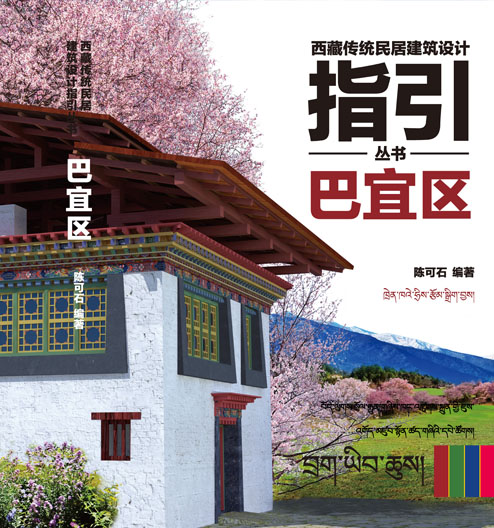
Design Guidelines for Traditional Residential Buildings in Bayi District, Linzhi City
Xizang LInzhi
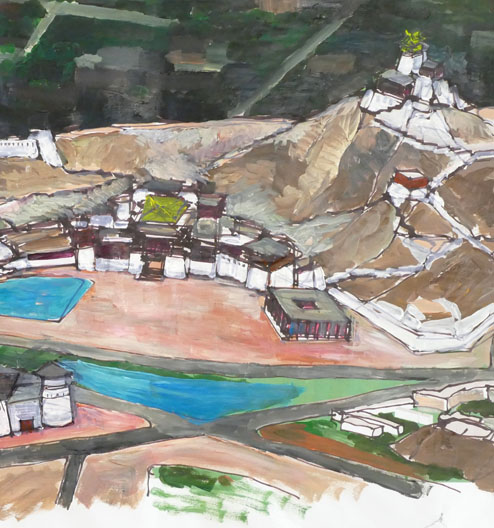
The overall improvement of the urban style and landscape of the 5.8 square kilometers historic city around Lhasa Potala Palace
tibet lhasa

Huangshan Chinese painting and calligraphy town

